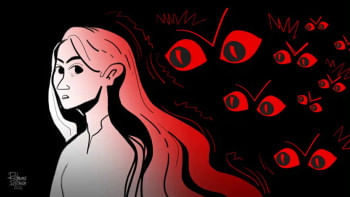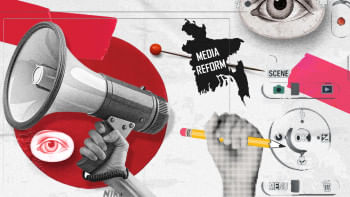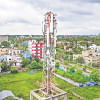When likes shape the message

Not too long ago, the pace of Bangladesh's communications industry moved at a leisurely speed through press releases, press briefs and newspaper headlines. Corporate news percolated through broadsheets; NGOs issued quarterly newsletters; ministries relied on bulletins and briefing notes. Communication was methodically crafted, scheduled and disseminated, with no space for debate in between.
Then came the wave, or storm, of social media.
In the last 10 years, platforms such as Facebook, YouTube and Instagram have revolutionised how communication happens in Bangladesh. What was once a platform for selfies, status updates, and memes is now Bangladesh's most powerful communication engine. Over 52.9 million Bangladeshis are on Facebook as of 2024.
Today, any serious campaign by a company, NGO, or the government begins not with a press release but with a Facebook video, a YouTube upload or a TikTok clip. Communication strategy is now a content calendar. Press rooms have turned into content laboratories. Journalists stream stories in real time, and NGOs reach previously unreachable groups through voiceover videos in dialects, cutting out the middlemen. Even advertising agencies have repurposed themselves as digital-first storytellers, hiring reel editors, social media strategists, meme-makers and analytics experts.
The transformation is visible everywhere. Take, for example, a health campaign by a local development organisation in Khulna—in the past, they would have produced leaflets and held courtyard meetings. Today, they upload short videos based on real stories of real people, shared widely on Facebook and WhatsApp, stimulating conversation and collective feedback within hours. The campaign reached more than one million people within a week, which is unthinkable with traditional methods. These videos, often under a minute long, humanise the message, generate empathy and invite viewers to comment and share, creating a digital chain of advocacy.
Even the government has adapted quickly. Ministries keep official pages. Facebook became a lifeline for public health communication during the pandemic, while the YouTube channels of health agencies offered educational content in Bangla to millions. The Directorate General of Health Services gained thousands of followers almost overnight as people sought updates.
During emergencies such as cyclones, floods or political unrest, social media now plays a vital role in disaster response. Verified government pages are seen as trustworthy sources, while citizens use social platforms to report local conditions, ask for help or aid. This two-way model of communication, previously unimaginable in a bureaucratic set-up, has redefined public engagement in Bangladesh.
But with this explosion comes complexity. The same tool that gives voice can just as easily dilute it. Communication is now double-edged. It offers speed and scope but demands swiftness, precision and responsibility. Misuse of social media or clickbait content can harm credibility and trust. Misinformation spreads, and audience fatigue is real. Algorithms prioritise engagement, not truth. And when everyone is speaking at once, real messages get lost.
Many organisations, especially those in the development sector, have learnt this the hard way. A flashy campaign may get thousands of likes but fail to influence real-world behaviour if it is not sophisticated, strategic, and empathetic. Short-term virality may provide vanity metrics, but it often lacks depth. In contrast, low-budget yet thoughtful storytelling has a greater long-term impact. Emotion continues to outperform extravagance in the digital storytelling economy.
Private companies are evolving too. Brands are using influencer marketing, collaborating with TikTok and YouTube creators. A mobile phone company promoting rural access to smartphones partnered with regional content creators to demonstrate their products' real-life benefits. They reported a sales increase of over 18 percent in targeted regions. This signals a major shift. Instead of pushing messages, brands are embedding their narratives within communities.
So, what is the future of Bangladesh's communications industry?
The advent of social media is no longer a trend; it is the reality. But to make it meaningful, communication must be intentional and thoughtful. Campaigns need to be built with clear intent, grounded in audience insight and measured by effect, not just impressions. It is not about being everywhere. It is about being relevant where it matters. Heavy usage, tone-deaf content or over-reliance on a single channel can undermine the very impact we aim to achieve. Diversifying across platforms and tailoring content for different audience segments are more crucial than ever.
It is also vital to recognise that while social media opens doors for democratic participation in public discourse, it can also create echo chambers and polarisation if left unchecked. The communication sector must work alongside fact-checkers, ethical guidelines and media literacy programmes to counter misinformation and online toxicity. Social media should be a space for dialogue, not digital warfare.
Finally, organisations must treat social media not as a substitute for strategy but as a tool of strategy. It should align with broader communication goals—raising awareness, shifting attitudes, and driving behaviour change. Campaigns need to be co-created with communities, monitored for relevance and revised with humility.
In the end, it is not the algorithm that makes a message effective. It is the story and the strategy that bring it to life.
Rafe Sadnan Adel is a former adjunct faculty member of the Department of Media Studies and Journalism at the University of Liberal Arts (ULAB).
Views expressed in this article are the author's own.
Follow The Daily Star Opinion on Facebook for the latest opinions, commentaries and analyses by experts and professionals. To contribute your article or letter to The Daily Star Opinion, see our guidelines for submission.

 For all latest news, follow The Daily Star's Google News channel.
For all latest news, follow The Daily Star's Google News channel. 






Comments